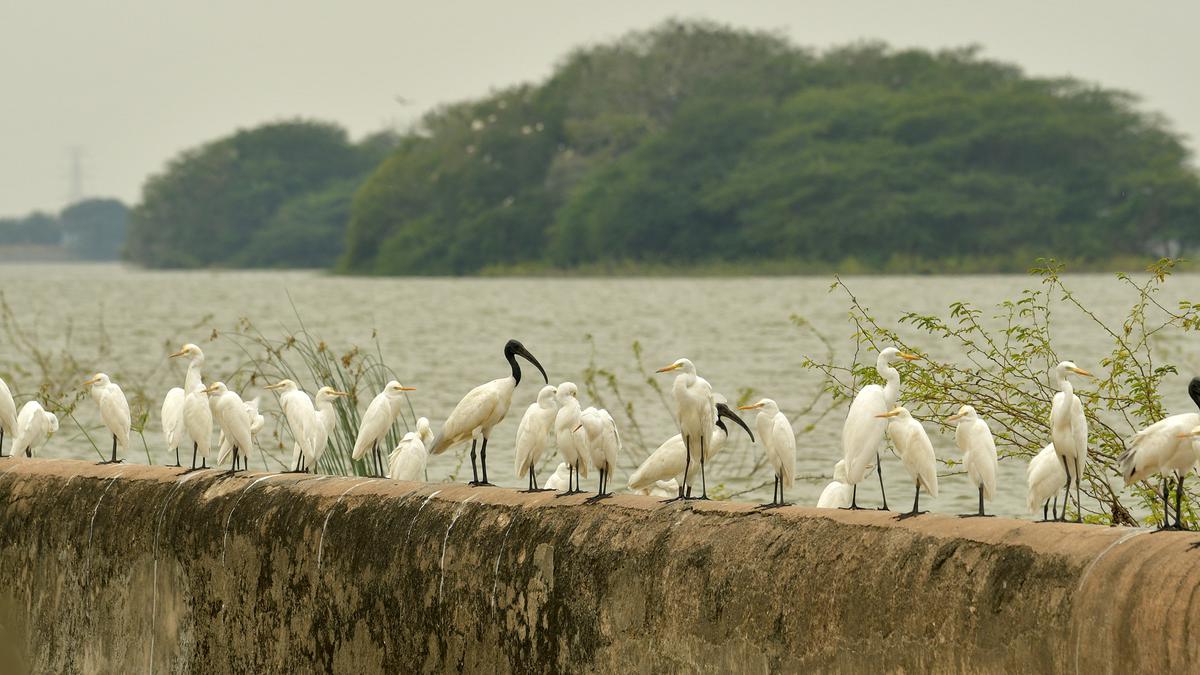
Ariyalur’s Ramsar wetland Karaivetti Bird Sanctuary attracts nature’s ‘transit passengers’ from all over the world
The Hindu
Karaivetti Bird Sanctuary in Tamil Nadu, a Ramsar site, is a haven for diverse flora and fauna.
Herons, egrets and ibises have queued up on the parapet, watching life go by as small waves lap on the embankment wall of the lake at Karaivetti Bird Sanctuary, located in Ariyalur district, 50 kilometres from Tiruchi.
They do not seem to mind the photographer preparing to shoot them on camera. Across the narrow road running through the property, there are more birds, perched on a dead tree trunk, looking on with apparent interest, as a farmer tries to get his tractor going.
The sanctuary, one of the largest inland wetlands of Tamil Nadu, was recently declared a Ramsar site, along with the Longwood Shola reserve forest in The Nilgiris.
A Ramsar site is a wetland designated to be of international importance under the Ramsar Convention, an international environmental treaty signed on February 2, 1971 in Ramsar, Iran, under the auspices of UNESCO. The pact is also known as The Convention on Wetlands.
The recognition is an important one, especially for Tamil Nadu, which leads the country with 16 such sites, says Supriya Sahu, Additional Chief Secretary, Environment, Climate Change, and Forests.
“The Ramsar site tag improves the potential of the wetlands through national and international funding,” she writes in an email interview. “It is a permanent tag and only in exceptional circumstances, due to extreme anthropogenic factors, are the Ramsar sites put in the Montreux record (negative list) until the time they are restored to their existing level.”
Covering 453.7 hectares, Karaivetti is home to over 500 species of flora and fauna. Its geographical location on the Central Asian Flyway makes it an important breeding and foraging ground for birds.

ACB files case against IPS officer N. Sanjay in Andhra Pradesh. The official is accused of manipulating the tender processes for awarding contract for development and maintenance of AGNI-NOC portal, and conducting awareness meetings for SC/STs. It is alleged that the total value of properties stolen, or involved in the case is estimated at ₹1,75,86,600.










